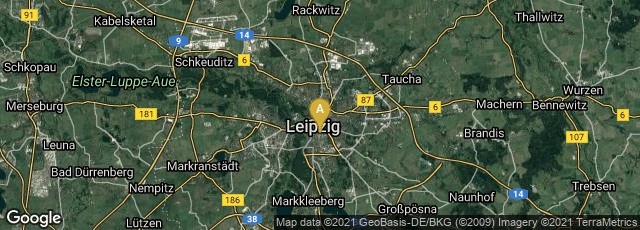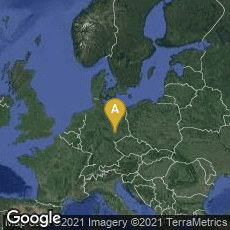

A: Mitte, Leipzig, Sachsen, Germany
In 1710 Paul Pater issued a small quarto book of 91 pages entitled De Germanae miraculo optimo, maximo typis literarum earumque differentiis dissertatio, qua simul artis typographicae universam rationem explicat at the press of Jo. Frider. Gleditch and Son in Leipzig.
This survey of the German printing industry discussed "where and when Printing was discovered, the manufacture of types and printing-ink, specimens of various types, early-printed books, celebrated printers, the cost of printing and the profit made by printers, ending with debates whether learned men ought to make a profit by printing, whether a type-founder makes a good printer, and whether all printing-offices should be conducted at the public expense for the public good" (Bigmore & Wyman, A Bibliography of Printing II [2001] 148).
"The third chapter treats of different types then in use in Germany and their names, and shows specimens of capitals and lower-case in roman and italic, in various weights, and in sizes from Grosse Missal-Versal to Nonpareil. These are followed by a variety of fraktur and schwabacher types, Greek, hebrew, Samaritan, Chaldaic, etc. The book is probably one of the earliest tractates on the typographical material of a nation, and gives a charactersitic collection of fonts in use in German printing-houses at the end of the seventeeth and beginning of the eighteenth century. Its title page indicates what could be done when a German printer took the bit in his teeth. . . ." (Updike, Printing Types, Their History, Forms, and Use. A Study in Survivals. Third Edition [1962] 152, with 3 full-page illustrations from Pater's book).
According to James Mosley, in his notes to the 1996 edition of Horace Hart's Charles Earl Stanhope and the Oxford University Press (1896) p. xxx, note 8:
"An 'entirely new kind of printing press' was invented by Erhard Weigel (1625-99), Professor of Mathematics at the University of Jena. With it 'one workman could exert a pressure equal to that of two study men with a press of the usual kind, using all their strength.' He laid it aside when the printers protested that it would cause unemployment( Paul Pater, De Germaniae Miraculo. . . . Dissertatio (Leipzig, 1710, pp. 14, 56.) It sounds as if some new principle was at work here, but Pater's account gives few details."